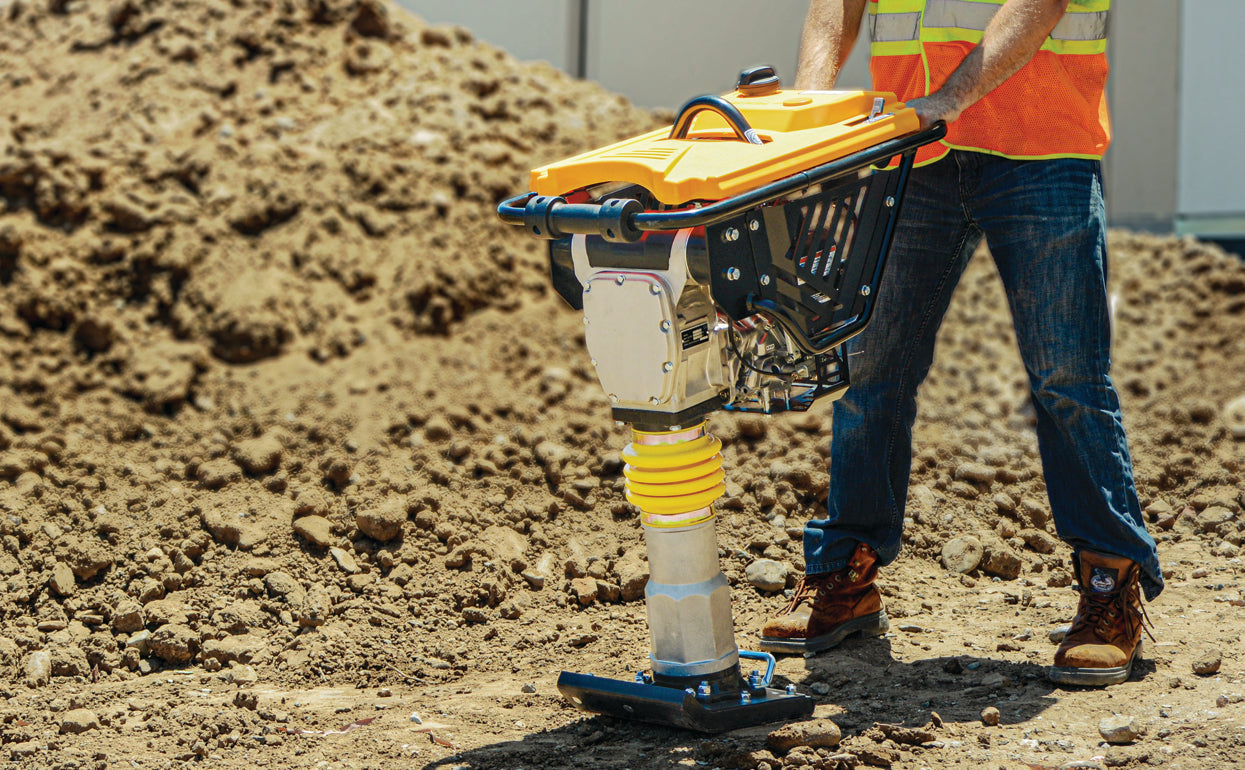In the world of construction and civil engineering, the quest for efficiency is unceasing. One of the crucial aspects of achieving efficiency in these industries is compaction – the process of reducing the volume of soil, gravel, or other materials by eliminating air voids. While various methods of compaction exist, one method that has gained significant attention is rammer compaction. This blog will delve into the science behind rammer compaction and the remarkable benefits it brings to construction projects.
Understanding Rammer Compaction
Rammer compaction, also known as "jumping jack compaction," is a compaction technique that involves the use of a machine known as a rammer. The rammer consists of a heavy steel foot that repeatedly jumps or tampers onto the ground surface. The foot's impact forces the soil particles to rearrange, effectively eliminating air voids and increasing the material's density.
The key principle behind rammer compaction is dynamic compaction. Unlike static compaction methods that rely on the machine's weight alone to compress the material, dynamic compaction utilizes the energy generated by the machine's repetitive jumping motion. This energy creates a series of high-frequency impacts, causing the soil particles to become denser and better interlocked.
The Science Behind Rammer Compaction
Rammer compaction leverages several scientific principles to achieve its efficient results:
1. Impact Energy Conversion: The rammer's vertical jumps generate kinetic energy, which is converted into potential energy at the peak of the jump. When the foot impacts the ground, this potential energy is transferred into the soil, causing it to compact. The repeated impacts efficiently transmit energy throughout the material, leading to more uniform compaction.
2. Dynamic Loading: The rapid succession of impacts from the rammer's foot subjects the soil to dynamic loading. This loading creates stress waves that propagate through the soil, promoting particle rearrangement and minimizing voids. The interplay of stress waves helps distribute compaction energy evenly.
3. Particle Realignment: The dynamic compaction process encourages soil particles to reorganize. Particles that were once loosely packed are pushed closer together, resulting in a more compact and stable material structure. The increased density enhances the material's load-bearing capacity and reduces the risk of settlement.
Benefits of Rammer Compaction
The application of rammer compaction offers a range of benefits that contribute to the efficiency and quality of construction projects:
1. Uniform Compaction: Rammer compaction's dynamic nature ensures consistent compaction across the entire area. This uniformity reduces the likelihood of uneven settlement, which can lead to structural issues over time.
2. Increased Density: The energy-efficient design of rammer compactors results in higher compaction densities compared to static methods. This increased density enhances the material's ability to support heavy loads, making it ideal for foundations and other load-bearing applications.
3. Time and Labor Savings: Rammer compactors are highly efficient and can cover larger areas in a shorter time compared to some other compaction methods. This efficiency translates to reduced labor requirements and shorter project timelines.
4. Versatility: Rammer compactors can be used in various soil types, including cohesive soils and granular materials. This versatility makes them a valuable tool on a wide range of construction sites.
5. Reduced Environmental Impact: Rammer compaction generates fewer emissions than some larger compaction equipment, contributing to a smaller carbon footprint on construction projects.
Rammer compaction, driven by the principles of dynamic compaction and impact energy conversion, represents a powerful tool in the construction and civil engineering toolbox. Its ability to deliver uniform compaction, increased density, and other remarkable benefits makes it an attractive choice for a range of projects. As the construction industry continues to evolve, rammer compaction stands as a testament to the fusion of science and technology to achieve efficiency and quality in building endeavors.










